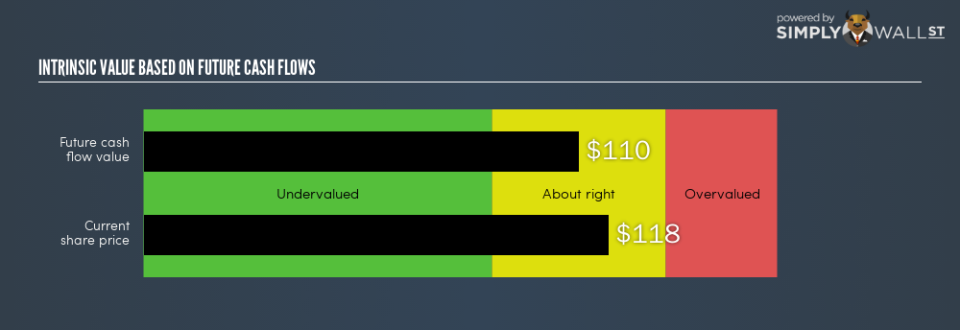Signature Bank (NASDAQ:SBNY) Investors Are Paying Above The Intrinsic Value

One of the most difficult industry to value is banking, given that they adhere to different rules compared to other companies. Banks, for example, must hold certain levels of tiered capital in order to maintain a safe cash cushion. Emphasizing factors such as book values, along with the return and cost of equity, is appropriate for evaluating SBNY’s valuation. Today we will look at how to value SBNY in a fairly accurate and uncomplicated way.
Check out our latest analysis for Signature Bank
Why Excess Return Model?
There are two facets to consider: regulation and type of assets. United States’s financial regulatory environment is relatively strict. In addition to this, banks generally don’t hold substantial portions of physical assets on their balance sheet. Therefore the Excess Returns model is appropriate for deriving the true value of SBNY as opposed to the traditional model, which puts weight on factors such as capital expenditure and depreciation.
Calculating SBNY’s Value
The central belief for this model is that equity value is how much the firm can earn, over and above its cost of equity, given the level of equity it has in the company at the moment. The returns above the cost of equity is known as excess returns:
Excess Return Per Share = (Stable Return On Equity – Cost Of Equity) (Book Value Of Equity Per Share)
= (0.13% – 11%) x $86.14 = $1.89
We use this value to calculate the terminal value of the company, which is how much we expect the company to continue to earn every year, forever. This is a common component of discounted cash flow models:
Terminal Value Per Share = Excess Return Per Share / (Cost of Equity – Expected Growth Rate)
= $1.89 / (11% – 2.9%) = $23.84
Putting this all together, we get the value of SBNY’s share:
Value Per Share = Book Value of Equity Per Share + Terminal Value Per Share
= $86.14 + $23.84 = $109.98
This results in an intrinsic value of $109.98. Relative to today’s price of US$118, SBNY is , at this time, fairly priced by the market. This means there’s no real upside in buying SBNY at its current price. Pricing is one part of the analysis of your potential investment in SBNY. Analyzing fundamental factors are equally important when it comes to determining if SBNY has a place in your holdings.
Next Steps:
For banks, there are three key aspects you should look at:
Financial health: Does it have a healthy balance sheet? Take a look at our free bank analysis with six simple checks on things like bad loans and customer deposits.
Future earnings: What does the market think of SBNY going forward? Our analyst growth expectation chart helps visualize SBNY’s growth potential over the upcoming years.
Dividends: Most people buy financial stocks for their healthy and stable dividends. Check out whether SBNY is a dividend Rockstar with our historical and future dividend analysis.
For more details and sources, take a look at our full calculation on SBNY here.
To help readers see past the short term volatility of the financial market, we aim to bring you a long-term focused research analysis purely driven by fundamental data. Note that our analysis does not factor in the latest price-sensitive company announcements.
The author is an independent contributor and at the time of publication had no position in the stocks mentioned. For errors that warrant correction please contact the editor at editorial-team@simplywallst.com.

